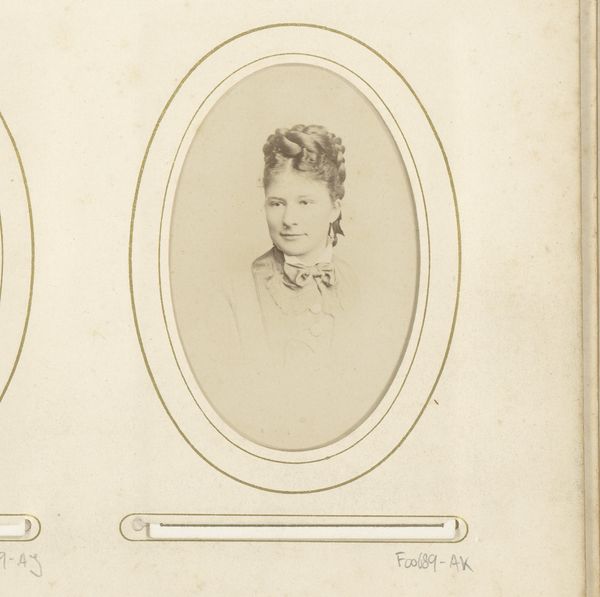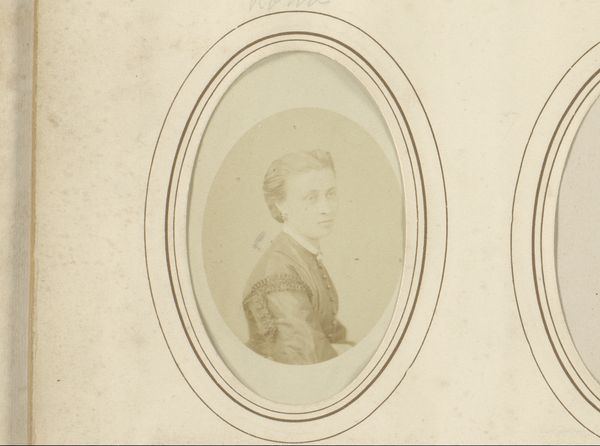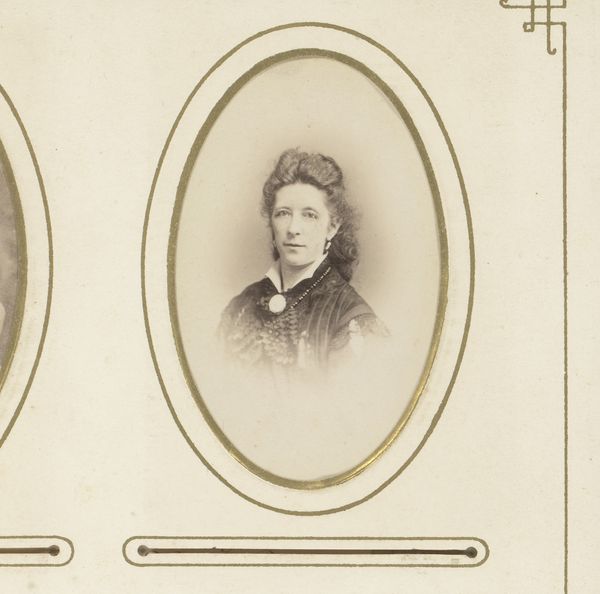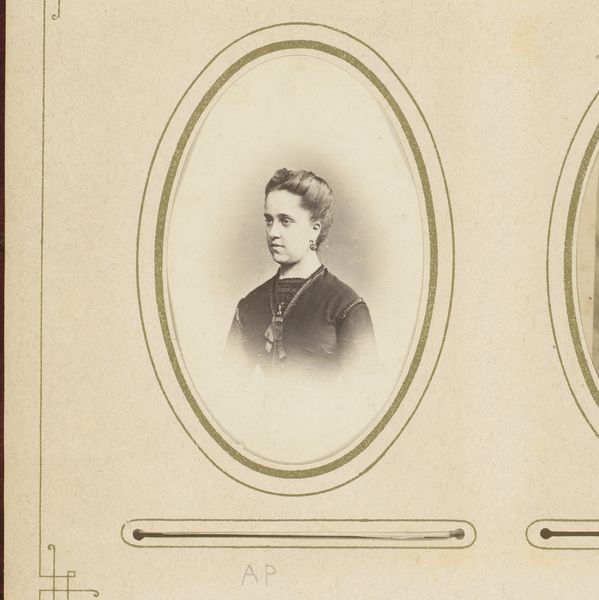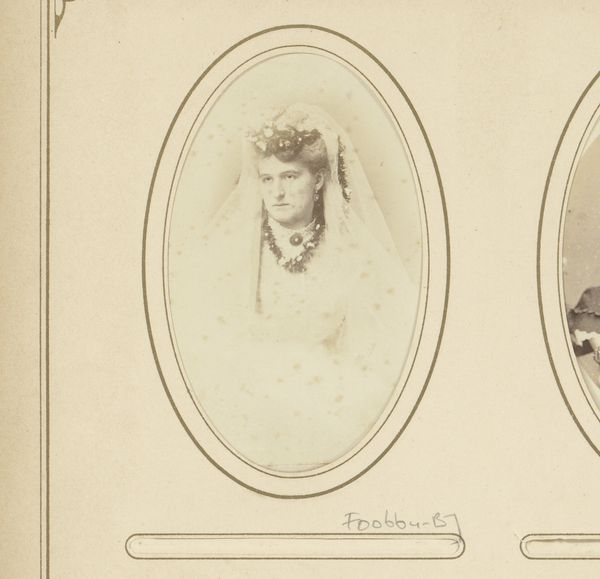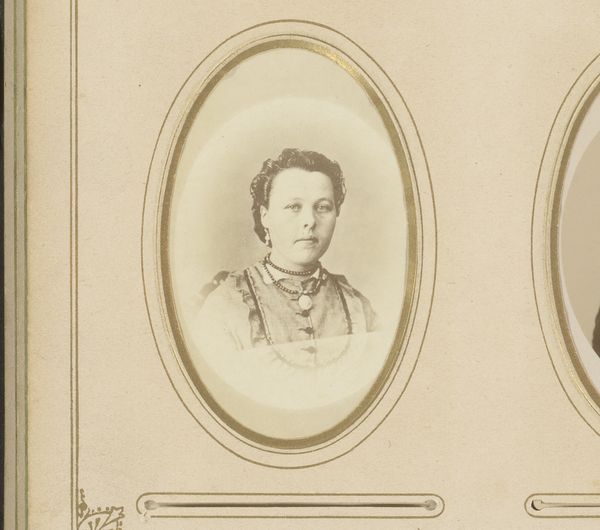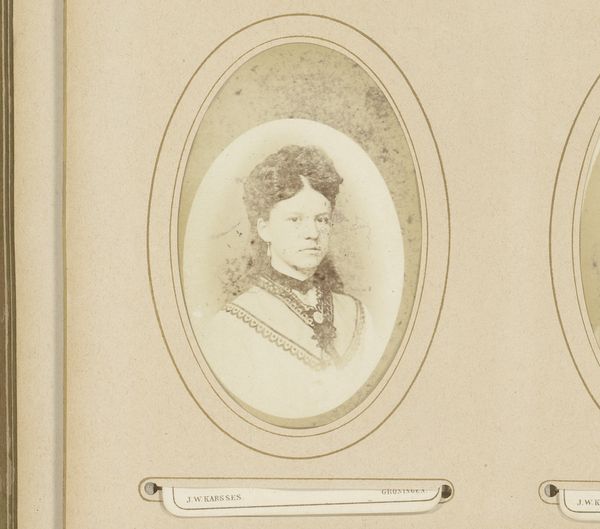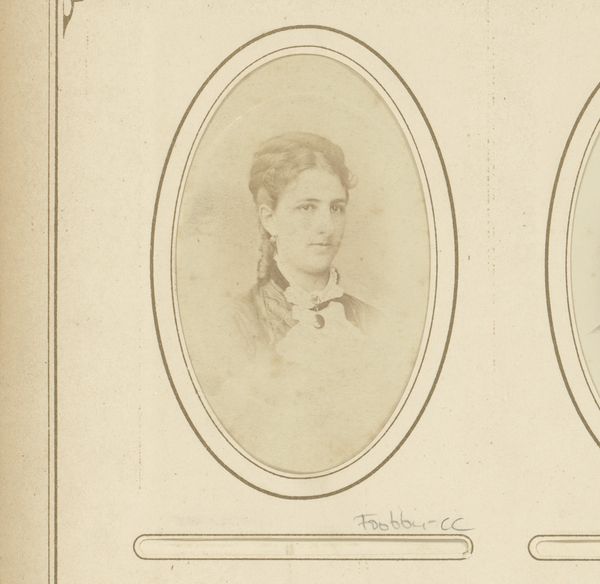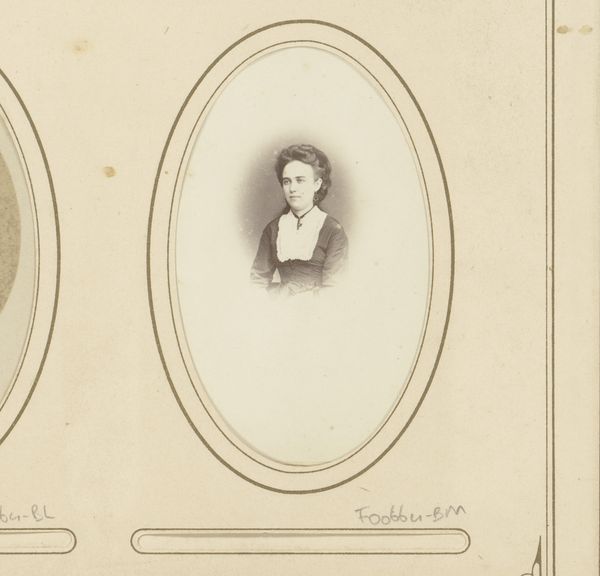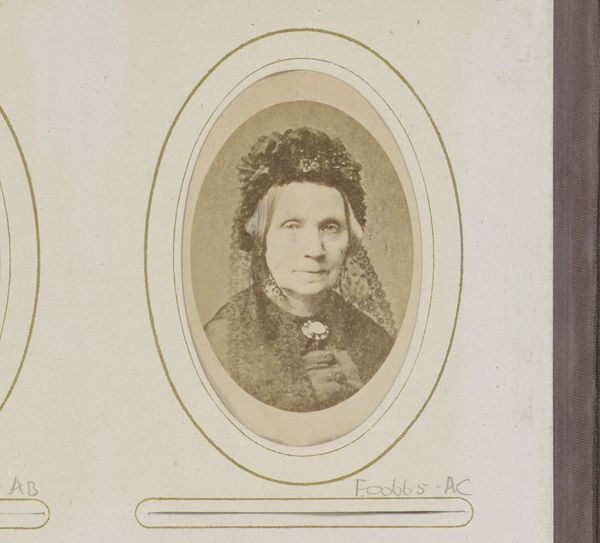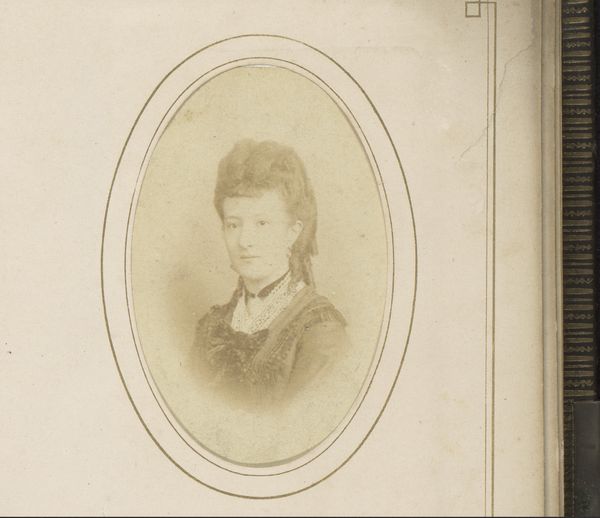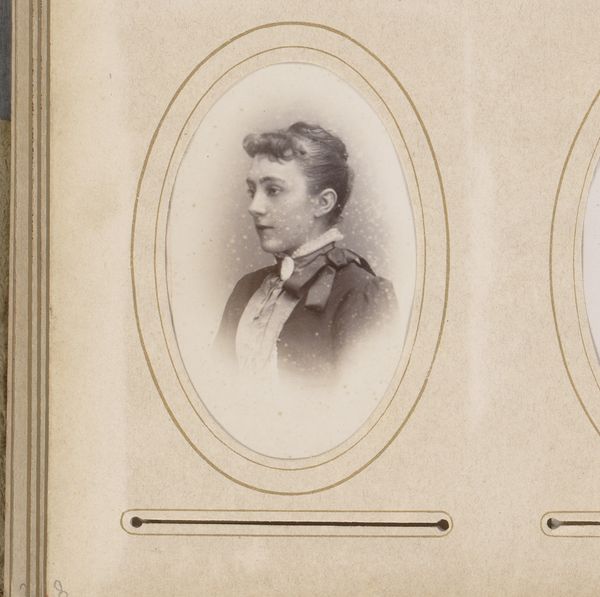
photography
#
portrait
#
photography
#
19th century
Dimensions: height 85 mm, width 51 mm
Copyright: Rijks Museum: Open Domain
Editor: So, this is "Portret van Bertha Abrath," a photograph by Fritz Meycke from 1873-74. It's quite austere, a sepia-toned oval portrait set within a larger album page. What symbols or meanings jump out at you? Curator: I’m struck by the subject's averted gaze, isn't it? Consider how that communicates reluctance, perhaps even resistance to being observed. In the 19th century, portraiture wasn’t just about representation, it was about constructing an ideal. Do you notice how her dress, while elegant, is almost masculine in its tailoring? Editor: Yes, now that you point it out. It's like she’s inhabiting a space between masculine power and feminine expectation. Curator: Precisely. Think about what that conveys about gender roles at the time. The choker necklace too–it's both fashionable and restrictive, visually suggesting societal constraints. Beyond her clothing, the photographic process itself speaks volumes. Early photography, with its long exposure times, demanded stillness, almost a suspension of life. Isn't this stillness an important element in this portrait's language? Editor: Absolutely, it adds a layer of seriousness. It feels more deliberate than a casual snapshot. Were oval portraits particularly significant then? Curator: The oval format does evoke classical cameos and medallions, connecting her image to a longer history of honoring and commemorating individuals. This small visual choice echoes enduring cultural symbols and elevates the portrait from simple documentation to something more timeless, wouldn’t you agree? Editor: That's fascinating, I hadn't considered the connection to classical forms. Thank you. It has made me consider photographic portraiture as more of a constructed symbol. Curator: Indeed. Seeing through the layers of history encoded in the image is what brings it to life.
Comments
No comments
Be the first to comment and join the conversation on the ultimate creative platform.
